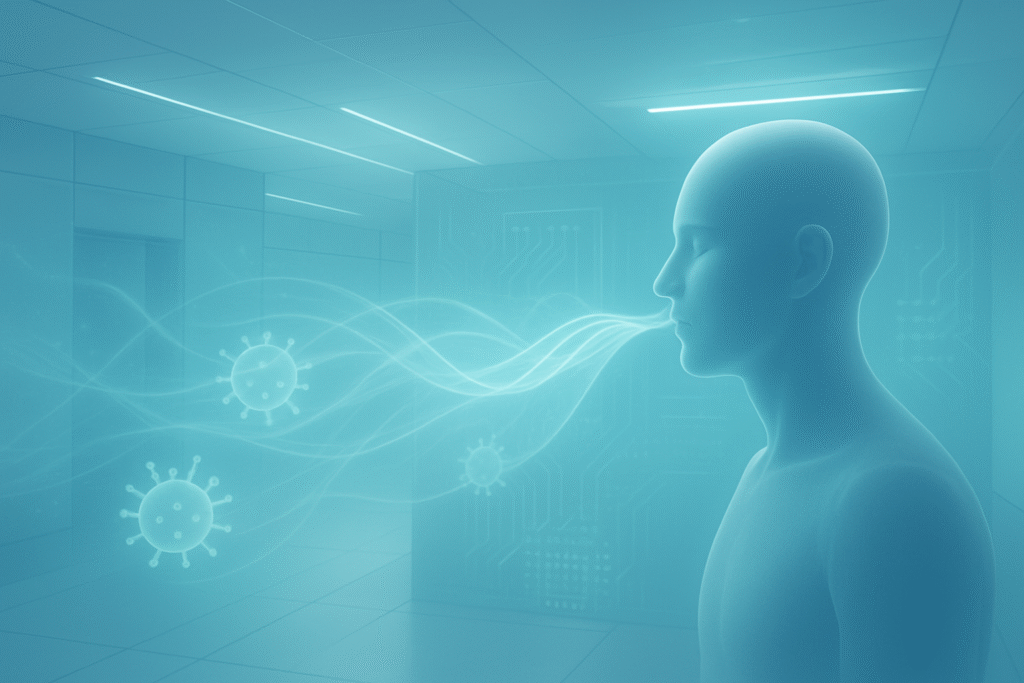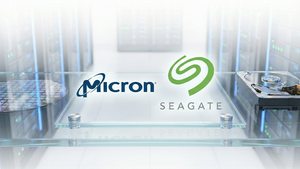
In a significant leap forward for public health and environmental control, semiconductor technology is rapidly transforming the landscape of air sterilization, moving beyond conventional filtration to offer active, intelligent, and highly effective solutions against airborne threats. This innovation marks a pivotal moment, promising to fundamentally enhance health and safety across homes, workplaces, healthcare facilities, and public spaces by proactively neutralizing a wide spectrum of contaminants, from virulent pathogens to harmful chemical pollutants. The immediate significance lies in the development of sophisticated systems that don't just trap but actively destroy microscopic dangers, setting a new standard for clean air and infection control.
This paradigm shift is driven by the integration of advanced semiconductor-based components into air purification systems, enabling unprecedented levels of efficiency and precision. By leveraging the unique properties of these materials, modern air sterilizers are now capable of delivering comprehensive air treatment that was once the realm of speculative science. This technological evolution is poised to redefine our approach to indoor air quality, offering robust defenses against both present and future airborne challenges.
The Microscopic War: How Semiconductors Are Redefining Air Purification
The core of this revolution lies in several innovative applications of semiconductor technology, each bringing distinct advantages to the fight for cleaner air. One of the most prominent is Photocatalytic Oxidation (PCO), which utilizes semiconductor materials, predominantly titanium dioxide (TiO₂), as catalysts. When exposed to ultraviolet (UV) light, these semiconductors generate highly reactive oxygen species (ROS), such as hydroxyl radicals, which effectively break down organic pollutants. This includes volatile organic compounds (VOCs), bacteria, viruses, mold, and odors, converting them into harmless substances like carbon dioxide and water. This approach significantly differs from traditional filters that merely trap pollutants; PCO actively destroys them at a molecular level, preventing accumulation and potential re-release. Innovations like nanomaterial enhancement provide larger surface areas and improved catalytic properties, while some PCO filters, like those developed by Samsung (KRX: 005930), are even regenerable, offering extended lifespans and reduced waste.
Another critical advancement is UV-C LED Sterilization. Unlike older, bulky mercury-vapor UV lamps, UV-C Light Emitting Diodes (LEDs) are compact semiconductor devices that emit germicidal ultraviolet light in the 200-280 nm range. This high-energy UV-C light directly damages the DNA and RNA of microorganisms, effectively inhibiting their reproduction and spread. The innovation here lies in the LEDs' compact size, energy efficiency, and extended operational life, making them versatile for integration into various devices, from portable sterilizers to HVAC systems. Furthermore, precise wavelength control allows for optimized germicidal effectiveness, and the development of "Far-UVC" light shows promise for safely disinfecting occupied indoor spaces, as it effectively kills microbes while being safe for human exposure, a significant departure from the safety concerns of traditional UV-C lamps.
Beyond direct sterilization, semiconductor technology also powers Integrated Semiconductor-based Systems and Smart Monitoring. This involves sophisticated sensors, microcontrollers, and IoT capabilities that create responsive and adaptive air purification systems. These systems continuously monitor air quality in real-time, detecting particulate matter, airborne pollutants, and molecular contamination, even at trace levels. This enables proactive risk mitigation by identifying changes or malfunctions early, optimizing purification settings dynamically, and ensuring compliance with stringent health and safety regulations. The integration of data-driven decision-making, autonomous operation (such as UV-C LED-equipped sterilization robots), and hybrid solutions combining HEPA/ULPA filters with semiconductor-based gas-phase filtration represents a multi-layered, intelligent approach to contamination control that far surpasses previous generations of air purifiers.
Corporate Clean Air Race: Shifting Fortunes in the Tech and Health Sectors
The burgeoning field of semiconductor-driven air sterilization is creating new opportunities and competitive pressures across the tech and health industries. Companies specializing in semiconductor manufacturing are at the forefront, as demand for high-performance UV-C LEDs, advanced photocatalytic materials, and sophisticated sensor arrays surges. Giants like Samsung (KRX: 005930), with its reported innovations in regenerable PCO filters, and other global semiconductor players like LG Innotek (KRX: 011070), a key developer of UV-C LED technology, stand to benefit significantly. Their expertise in material science and mass production positions them as crucial enablers of this new wave of air purification.
For air purification and HVAC companies, this presents both an opportunity for growth and a challenge to adapt. Traditional filter manufacturers must now integrate advanced semiconductor components and intelligent systems to remain competitive. Companies that embrace these technologies, such as those developing smart HVAC systems with integrated UV-C LEDs and PCO units, will gain a strategic advantage. Startups focusing on IoT-enabled health tech and environmental monitoring are also poised for disruption, offering specialized sensors and software platforms that connect these advanced sterilizers into comprehensive smart building ecosystems. This could lead to partnerships between established HVAC players and agile tech startups, fostering a new ecosystem of integrated air quality management.
The competitive implications are significant. Companies that fail to innovate and incorporate semiconductor-based solutions risk losing market share to those offering more effective, energy-efficient, and intelligent air sterilizers. This development could disrupt existing product lines, making older, purely mechanical or less efficient purification systems obsolete. Market positioning will increasingly depend on the ability to deliver not just clean air, but proven clean air through real-time monitoring and active pathogen destruction, pushing companies towards more sophisticated, data-driven solutions.
A Breath of Fresh Air: Broader Implications and Societal Impact
The widespread adoption of semiconductor-based air sterilizers carries profound wider significance, fitting seamlessly into broader AI and health technology trends. This advancement contributes directly to the growing emphasis on proactive public health measures and smart infrastructure. In the wake of global health crises, the ability to actively neutralize airborne pathogens in shared spaces moves from a luxury to a necessity, aligning with trends in infectious disease control and personalized health management. It also intersects with the push for sustainable technology, as UV-C LEDs offer energy efficiency and a mercury-free alternative to traditional lamps, while regenerable filters reduce waste.
The impacts are far-reaching. In healthcare settings, these technologies promise a significant reduction in healthcare-associated infections (HAIs), improving patient outcomes and reducing the burden on medical systems. In commercial and educational environments, they can enhance productivity by creating healthier indoor climates, reducing sick days, and fostering a sense of safety for occupants. For consumers, integrated smart home systems with semiconductor air sterilizers will offer unprecedented control and assurance over their indoor air quality. Potential concerns, however, include the initial cost of deployment for these advanced systems and ensuring proper maintenance to guarantee their effectiveness over time. There's also a need for clear regulatory standards and public education to differentiate effective semiconductor-based solutions from less effective or potentially harmful imitations.
Comparisons to previous AI milestones reveal a similar trajectory: initial skepticism giving way to widespread adoption as the technology matures and proves its value. Just as AI has transformed data analysis and automation, semiconductor air sterilization is poised to transform environmental health, offering a tangible, immediate benefit to human well-being. This represents a significant step towards creating truly resilient and health-conscious living and working environments.
The Horizon of Hyper-Clean Air: Future Developments and Challenges
Looking ahead, the trajectory of semiconductor-driven air sterilization points towards increasingly intelligent, integrated, and personalized solutions. Expected near-term developments include the miniaturization of UV-C LED modules and PCO reactors, enabling their integration into an even wider array of devices, from personal wearables to automotive air systems. We can also anticipate advancements in AI-powered predictive analytics for air quality, where systems will not only monitor but also anticipate pollutant spikes based on environmental factors, occupancy, and even local weather patterns, adjusting sterilization protocols proactively.
Long-term developments are likely to see the emergence of self-cleaning surfaces and ambient air purification systems that are seamlessly woven into building materials, creating invisible, pervasive layers of defense against airborne threats. Research into novel semiconductor materials with enhanced photocatalytic efficiency under visible light, or even in the absence of external light sources, will continue to push the boundaries of what's possible. Potential applications on the horizon include highly localized "clean air zones" in public spaces, autonomous drone-based sterilization for large venues, and advanced air quality control in controlled environments like space habitats.
Challenges that need to be addressed include reducing manufacturing costs to enable wider accessibility, ensuring the long-term stability and efficiency of advanced semiconductor catalysts, and developing robust standards for testing and certifying the effectiveness of these complex systems. Experts predict a future where air purification is no longer a reactive measure but an integral, intelligent, and invisible component of our built environment, constantly working to safeguard our health. The focus will shift from "clean air" as a commodity to "hyper-clean air" as a fundamental expectation.
Breathing Easier: A Landmark in Environmental Health Technology
The emergence of semiconductor technology in advanced air sterilizers represents a landmark achievement in environmental health technology. The key takeaways are clear: we are moving beyond passive filtration to active, molecular-level destruction of airborne contaminants, powered by the precision and efficiency of semiconductor components like PCO catalysts and UV-C LEDs. This development is not merely an incremental improvement but a fundamental redefinition of air purification, offering robust protection against pathogens and pollutants previously difficult to mitigate.
This innovation's significance in the history of AI and related technologies lies in its tangible, immediate impact on human health and quality of life. It underscores a broader trend where advanced materials science and intelligent systems converge to solve critical societal challenges.
In the coming weeks and months, watch for increased adoption of these technologies in healthcare, commercial, and residential sectors. Keep an eye on announcements from major semiconductor manufacturers and air purification companies, as they unveil new products and strategic partnerships. Regulatory bodies will also play a crucial role in establishing standards that will shape the market and ensure consumer confidence. This is just the beginning of a cleaner, safer future, where the air we breathe is actively managed and protected by the silent, powerful work of semiconductor innovation.
This content is intended for informational purposes only and represents analysis of current AI developments.
TokenRing AI delivers enterprise-grade solutions for multi-agent AI workflow orchestration, AI-powered development tools, and seamless remote collaboration platforms.
For more information, visit https://www.tokenring.ai/.






